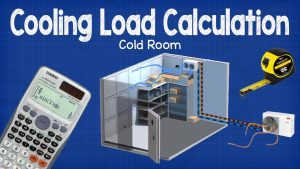How to Build a Small Cold Storage: A Step-by-Step Guide
Introduction
In today’s world, having a reliable cold storage solution is essential for preserving perishable goods. Whether you’re a small business owner looking to store your products or a homeowner wanting to keep your produce fresh for longer, building a small cold storage can be a cost-effective and practical solution. In this guide, we’ll walk you through the process of constructing your own small cold storage facility. How to build a small cold storage?
1. Planning and Design
Before diving into the construction process, careful planning and design are crucial to ensure a successful cold storage project. Consider the following factors:
1.1 Determine the Size and Capacity
Assess your storage needs and calculate the required size and capacity of your cold storage. Consider the amount and type of products you intend to store to determine the appropriate dimensions and shelving requirements.
1.2 Choose an Appropriate Location
Select a suitable location for your cold storage that is easily accessible and away from direct sunlight, extreme temperatures, and moisture. Ensure the area has proper insulation and ventilation to maintain optimal temperature and humidity levels.
1.3 Insulation and Construction Materials
Choose insulation materials that provide effective temperature control, such as polyurethane panels or Styrofoam. Consider using stainless steel or fiberglass-reinforced plastic (FRP) panels for the walls and ceiling as they are durable, easy to clean, and resistant to moisture and corrosion.

2. Construction Process
2.1 Framing and Flooring
Start by framing the walls and installing a sturdy flooring system. Use pressure-treated lumber for the framing to prevent rotting. Ensure the flooring is strong enough to support the weight of your products and any equipment you plan to use.
2.2 Installation of Insulation Panels
Attach the insulation panels to the framed walls, ceiling, and flooring. Ensure a tight fit and seal any gaps to maintain proper insulation. This will help prevent temperature fluctuations and ensure energy efficiency.
2.3 Electrical and Lighting
Hire a licensed electrician to handle the electrical work. Install appropriate wiring for lights, temperature control systems, and any other electrical equipment. Choose energy-efficient LED lighting to minimize heat production.
2.4 Cooling System Installation
Install a reliable cooling system that meets the temperature requirements of your stored products. Options include commercial refrigeration units, walk-in coolers, or mini-split air conditioning systems. Consult with a professional to determine the best choice for your needs.
2.5 Shelving and Storage Organization
Install sturdy and adjustable shelving units to maximize storage space. Organize the shelves in a way that allows proper air circulation and easy access to your products. Consider using plastic or stainless-steel shelving for durability and cleanliness.
3. Maintenance and Safety
3.1 Regular Cleaning and Sanitization
Maintain cleanliness by regularly cleaning and sanitizing your cold storage facility. Remove any spills or debris and disinfect surfaces to prevent bacterial growth and cross-contamination.
3.2 Temperature and Humidity Monitoring
Install temperature and humidity monitoring systems to ensure your cold storage remains within the desired range. Regularly check and calibrate these systems to avoid fluctuations that could compromise the quality of your stored products.
3.3 Proper Stock Rotation
Implement a stock rotation system to ensure that older products are used or sold first. This helps prevent spoilage and ensures that your inventory remains fresh and in good condition.

3.4 Backup Power Supply
Consider installing a backup power supply, such as a generator or battery backup, to ensure uninterrupted cooling in case of a power outage. This will protect your products from temperature fluctuations and potential spoilage.
3.5 Security Measures
Implement security measures to protect your cold storage facility and its contents. This may include installing security cameras, access control systems, and alarms to deter unauthorized access and theft.
4. Compliance with Regulations
Ensure that your small cold storage facility complies with local health and safety regulations. This may include obtaining necessary permits, meeting building codes, and adhering to food safety guidelines. Consult with local authorities to ensure you meet all the necessary requirements. For cold storage builders see here.
Conclusion
Building a small cold storage facility can provide you with a reliable and cost-effective solution for preserving perishable goods. By carefully planning, designing, and constructing your cold storage, you can create an environment that maintains optimal temperature and humidity levels, ensuring the freshness and quality of your stored products. Regular maintenance and adherence to safety regulations are crucial to keep your cold storage running smoothly. Follow this step-by-step guide, and soon you’ll have your own small cold storage facility ready to meet your storage needs.
Remember, the success of your cold storage project depends on proper planning, construction, and ongoing maintenance. By following these guidelines and seeking professional advice when needed, you can create an efficient and effective cold storage solution that will benefit your business or home for years to come.

Recent Comments